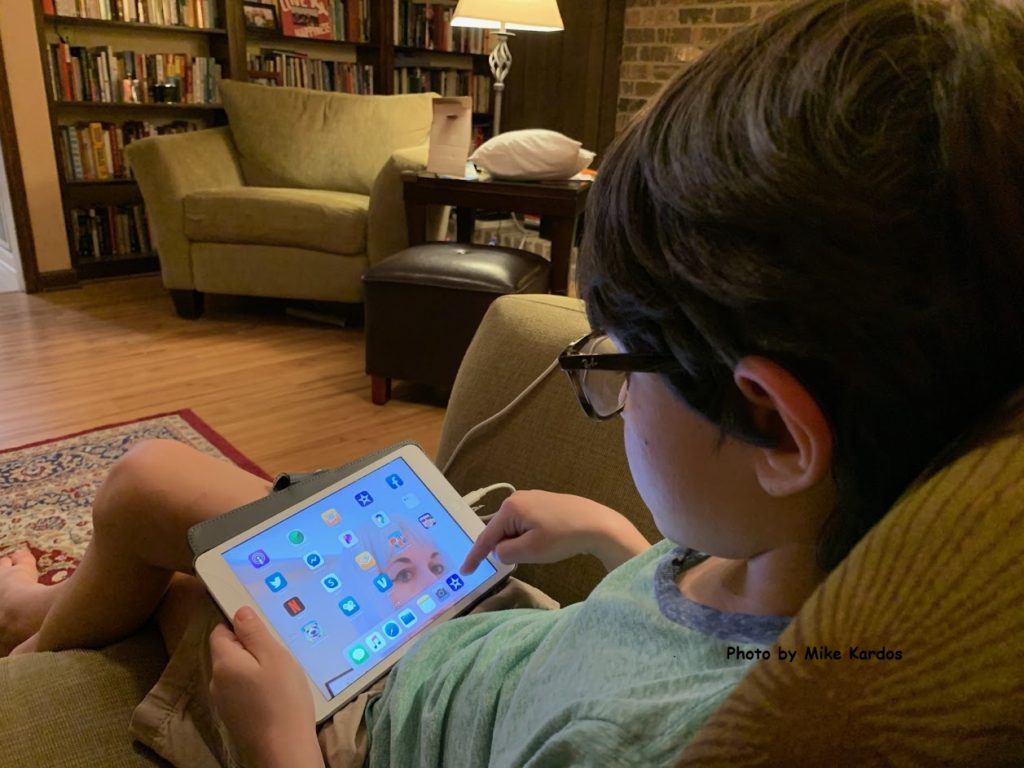
Kids are spending much more time on computers and other screens learning, staying in touch with friends and family virtually, and playing games. Are glasses with special blue light-blocking filters worth the expense? Our guest blogger, pediatric ophthalmologist Dr. Sheryl Menacker, addresses this question.
-Drs. Kardos and Lai
There is much buzz about glasses that filter out blue light from computer, phone, and other screen devices. But are the problems real and are these glasses worth the expense?
The American Academy of Ophthalmology says no, and here is the explanation from their website.
Are eyeglasses with special blue light-blocking filters worth the expense?
By absorbing the excess blue light from our devices, the eyeglasses claim to:
- improve sleep
- reduce digital eye strain
- prevent eye disease
We all want to do these things, but it’s not necessary to spend money on special eye wear for computer use. Here’s why:
- Blue light from computers will not lead to eye disease. It is true that overexposure to blue light and UV light rays from the sun can raise the risk of eye disease, but the small amount of blue light coming from computer screens has never been shown to cause any harm to our eyes.
- Sleep can be improved without special eyeglasses. You don’t need to spend extra money on blue light glasses to improve sleep— simply decrease evening screen time and set devices to night mode.
- Digital eye strain is not caused by blue light. The symptoms of digital eye strain are linked to how we use our digital devices, not the blue light coming out of them.
Computer/digital eye strain
While using devices will not damage your eyes permanently, staring at them for a long time can cause temporary discomfort. People experience eye strain in different ways, but symptoms can include:
- dry eyes
- blurry vision
- tearing or watery eyes
- headache
The reason we get digital eye strain is that we blink less when we stare at our devices.
Normally, humans blink around 15 times per minute—but this “blink rate” can be cut in half when staring at screens or doing other near work activities (like reading). To reduce eye strain:
- Take frequent breaks by using the “20-20-20” rule. Every 20 minutes look away from your screen and look at an object 20 feet away for at least 20 seconds. This gives your eyes a chance to reset and replenish themselves.
- Use artificial tears to lubricate your eyes when they feel dry.
- Keep your distance. Sit about 25 inches or at arm’s length from your screen and adjust its height so you’re looking slightly downward at it.
- Reduce glare and brightness. Devices with glass screens can cause glare. To reduce glare, consider a matte screen filter for your device. Adjusting the brightness and contrast of your screen and dimming the lighting near your screen can also help reduce eye strain.
- Wear eyeglasses. If you wear contact lenses, you already know they can increase dryness and irritation. To reduce these symptoms, try wearing eyeglasses instead when working on a computer for longer periods.
Sheryl Menacker, MD
©2020 Two Peds in a Pod®
Dr. Sheryl Menacker, of Tri-County Eye Physicians, is a certified Diplomate of the American Board of Ophthalmology, a Fellow of the American Academy of Ophthalmology, member of the American Association for Pediatric Ophthalmology and Strabismus, and examiner for the American Board of Ophthalmology. In addition to general pediatric ophthalmology, Dr. Menacker has a specialty interest in treating individuals with disabilities. She holds a clinical appointment at the University of Pennsylvania School of Medicine and Emory University, where she is an active teacher and lecturer.



